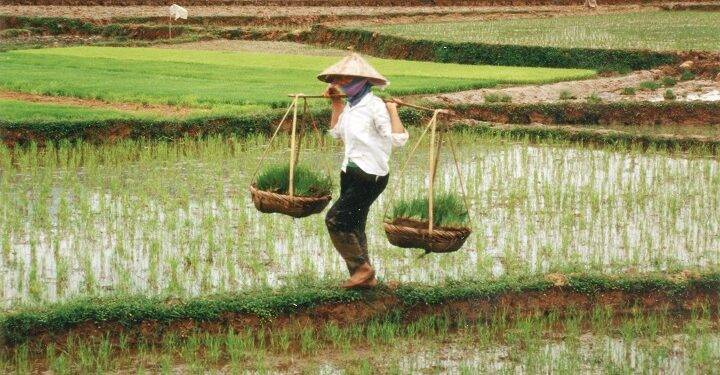Rice has always been an essential part of Vietnamese food security. The government has been encouraging rice production to rise for years, first for the country’s market and then for export so that more rice can be sold there. Since 1993, Vietnam has been a prominent rice exporter. In 2015, the country made 28 million metric tons of rice. There have been government-to-government contracts with countries in Asia, Africa, and the Middle East that have helped the country grow in the past. Vietnam became one of the world’s top rice exporters thanks to its strategy and low production costs.
Vietnam has a significant advantage when it comes to making rice. A group called the International Rice Research Institute (IRRI) estimates that rice fields make up 82 percent of Vietnam’s arable land and are very important to the country’s development. Vietnamese rice is grown mainly in the Mekong River Delta (52%) and the Red River Delta (20%). (18 percent).
Why is it so vital?
Rice is the primary source of income for more than 15 million smallholder farmers in the Red River and Mekong deltas. But the number of smallholders who can make a living from rice is going down, which is terrible for the people who live there. It costs about 100 dollars a month to grow rice in AnGiang, which is less than half of what coffee farmers make in Vietnam’s Central Highlands, where the rice is grown (Oxfam cited in The Economist, 2014).
Small-scale rice growers are having difficulty meeting the high-quality standards of premium rice markets. Pesticide use has soared in Mekong countries, including Vietnam because land use has become more intensive. This has led to a rise in pesticide use. In many cases, small-scale farmers don’t have the skills to grow high-quality rice. On the other hand, Vietnam tends to have rice strains that aren’t as good as those of competitors who have focused on fragrant rice.
Small-scale farmers who aren’t well-organized have fewer ways to sell their goods. One acre of rice is usually grown on each plot of land in Vietnam. This is a lot smaller than the ideal, two to three hectares (ha) (0.5 ha). It’s hard for farmers to find business partners because they have small farms and aren’t as organized as others. Rice may be a good crop for farmers who work together to form cooperatives, but it could also be harmful. They also have trouble meeting the needs of high-quality rice markets because they don’t have good connections with businesses, don’t know the market, and don’t run their groups well. Poor connections with private people. Farmers’ markets might be better off if more farmers joined as businesses.
Changes in the climate are making rice growers more vulnerable to damage. In 2016, the worst drought in the country’s history wiped out an estimated 1.29 million tonnes of rice, the worst in the country’s history. Nearly 2 million small-scale farmers and low-income families in the Mekong Delta, Vietnam’s “rice bowl,” lost their crops because of drought and saltwater intrusion. At least 221,000 hectares of rice paddies were affected.
People in Vietnam still grow rice with a lot of help from outside materials, hurting both the environment and the people who live there. There aren’t enough nutrients in the soil where rice is grown in Vietnam, which makes it impossible to plant other crops like maize right away. Methane from rice fields is a significant factor in global warming. Even though there have been a lot of recent efforts to make the industry more environmentally friendly, like the 3-/3+ and 1m5R policies, there are still very few environmentally friendly technologies and practices.











